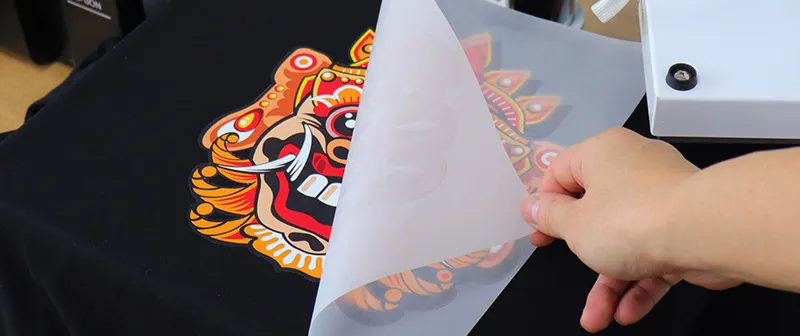DTF Printing Demystified: Everything You Need to Understand About Direct-to-Film
Wiki Article
Ultimate Overview to DTF Printing Strategies for Magnificent Fabric Styles
Beginning on the trip of understanding DTF printing methods can open up a world of possibilities for creating aesthetically fascinating textile designs. In this overview, we will certainly explore the elaborate information of DTF printing, from understanding the essential essentials to unraveling advanced color strategies that can elevate your designs to new heights.Comprehending DTF Printing Basics
DTF printing, a process that involves moving styles from a special movie to fabrics making use of heat and pressure, develops the foundation of fabric printing techniques. This cutting-edge method enables for premium, vibrant designs to be flawlessly moved onto numerous fabrics with accuracy and information. The very first step in DTF printing involves producing or selecting a layout that will be published onto the textile. This style is then published onto an unique film making use of a DTF printer, which makes use of certain dyes or pigments to ensure color precision and resilience.The last outcome is a sensational, long-lasting textile design that is washable, flexible, and immune to fading. On the whole, recognizing the fundamentals of DTF printing is necessary for mastering this modern fabric printing strategy.
Selecting the Right Fabric Products
Having established the fundamental concepts of DTF printing strategies for fabric styles, the next critical factor to consider lies in choosing the ideal fabric products to match this cutting-edge procedure efficiently. In addition, the stretchability of these products can fit the warm transfer process entailed in DTF printing without misshaping the design. By selecting the ideal textile products, designers can optimize the potential of DTF printing to produce spectacular and long-lasting fabric styles.
Mastering the Printing Refine
To master DTF printing techniques for textile designs, grasping the printing process is vital for accomplishing high-grade and regular outcomes. The printing process in DTF entails several key steps that need accuracy and attention to information. To start with, preparing the art work for printing is essential. This consists of ensuring the layout is properly sized and placed for the textile. Next, the layout is printed onto a special DTF film utilizing a suitable printer with the ideal setups to accomplish ideal shade vibrancy and clarity (DTF Printing). Once the design is printed, it is after that transferred onto the fabric utilizing a heat press device. The temperature level, pressure, and duration of heat application should be carefully regulated to make sure correct adhesion of the style to the textile. In addition, mastering the peeling procedure after warmth pushing is essential to avoid any damage to the layout or material. By honing each of these actions my link in the printing procedure, designers can regularly create long lasting and stunning textile designs with DTF printing strategies.
Enhancing Styles With Shade Methods

Additionally, experimenting with shade gradients can bring a feeling of motion and fluidity to the style. By blending colors seamlessly, a slope impact can be accomplished, including a dynamic and modern touch to the textile style. Furthermore, utilizing shade blocking strategies can create bold and striking visuals by juxtaposing various solid colors in distinctive areas of the layout.
In addition, including metallic or neon colors can give a distinct and eye-catching aspect to the fabric design, making it stick out and emanate a sense of vibrancy. When tactically used, these shade methods can elevate the total visual appeal of textile layouts, making them a lot more fascinating and unforgettable.
Troubleshooting Common DTF Printing Issues
After exploring different shade techniques to enhance fabric layouts, it is crucial to attend to usual DTF printing concerns that might develop during the manufacturing process. Furthermore, issues with image clarity and intensity can take place due to low-resolution pictures or incorrect printing methods. By being mindful of these common troubles and implementing the needed troubleshooting steps, you can enhance the total high quality of your DTF visit here published textile styles.Conclusion
In final thought, mastering DTF printing techniques is essential for creating stunning fabric designs. With technique and attention to detail, one can produce gorgeous and distinct textile styles utilizing DTF printing techniques. Layouts))))DTF printing, a procedure that entails transferring designs from an unique film to textiles making use of warmth and pressure, creates the foundation of fabric printing techniques.Having actually developed the foundational principles of DTF printing strategies for fabric styles, the following vital consideration lies in picking the proper fabric materials to complement this ingenious process effectively. By selecting the appropriate fabric products, developers can maximize the potential of DTF printing to develop resilient and spectacular textile layouts.
To succeed in DTF printing strategies for textile designs, understanding the printing procedure is vital for attaining top quality and constant outcomes. DTF Printing. By sharpening each of these steps in the printing process, developers can consistently create durable and stunning textile layouts with DTF printing techniques
Report this wiki page